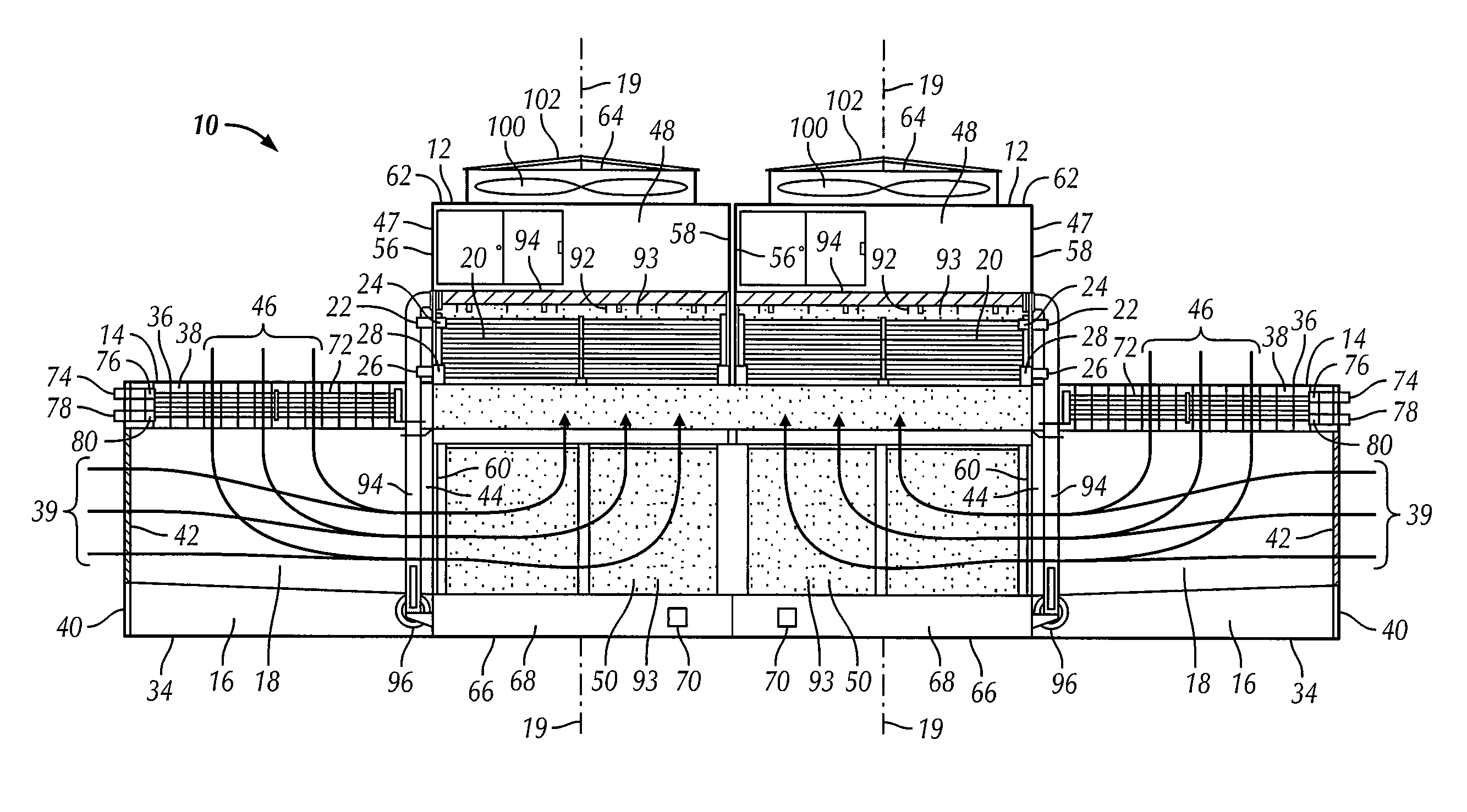Hybrid heat exchange apparatus
a heat exchange apparatus and hybrid technology, applied in lighting and heating apparatus, ventilation systems, heating types, etc., can solve the problems of water freezing, limited drying coolers, and evaporative condensation
- Summary
- Abstract
- Description
- Claims
- Application Information
AI Technical Summary
Benefits of technology
Problems solved by technology
Method used
Image
Examples
first embodiment
[0075]When present, the direct contact evaporative heat exchanger, typically in the form of direct contact heat transfer media 104, which is known as wet deck fill, provides direct, evaporative heat exchange when the air flow and the evaporative water or other cooling liquid come into direct contact with each other and are mixed with some desired degree of turbulence within the wet deck fill heat transfer media 104, when used. The turbulent mixing of the air and water in the heat transfer media 104 allows for greater heat transfer between the air and water, but the benefits of the increased turbulent mixing in the media 104 should not be overcome by potential adverse effects on the energy requirements of a larger fan motor or fan size or air flow reduction. As is well known in the art, there is a fine balance among these factors when deciding whether and what type of wet deck fill heat transfer media to use. That is why the use of the media 104 is optional in apparatus 10. When used...
third embodiment
[0129]The third alternative embodiment of the hybrid heat exchange apparatus 10″ of the present invention, shown in FIGS. 9 and 10, will now be described. Unless otherwise described specifically regarding this third embodiment of the apparatus 10″, the components and operation may be the same as described above regarding the first two embodiments of the apparatus 10 and 10′.
[0130]The apparatus 10″ is shown in FIGS. 9 and 10 as including two evaporative heat transfer cells 12 and two dry heat transfer cells 14, although any number of each of such cells may be used. The description will be with respect to an embodiment including one evaporative heat transfer cell 12 and one dry heat transfer cell 14, but still with reference to FIGS. 9 and 10, where the cross-section view of FIG. 2 shows one evaporative heat transfer cell 12 adjacent to and in fluid communication with a dry heat transfer cell 14 on the opposite sides of the evaporative heat transfer cell 12. The plenum chamber housing...
PUM
 Login to View More
Login to View More Abstract
Description
Claims
Application Information
 Login to View More
Login to View More - R&D Engineer
- R&D Manager
- IP Professional
- Industry Leading Data Capabilities
- Powerful AI technology
- Patent DNA Extraction
Browse by: Latest US Patents, China's latest patents, Technical Efficacy Thesaurus, Application Domain, Technology Topic, Popular Technical Reports.
© 2024 PatSnap. All rights reserved.Legal|Privacy policy|Modern Slavery Act Transparency Statement|Sitemap|About US| Contact US: help@patsnap.com










